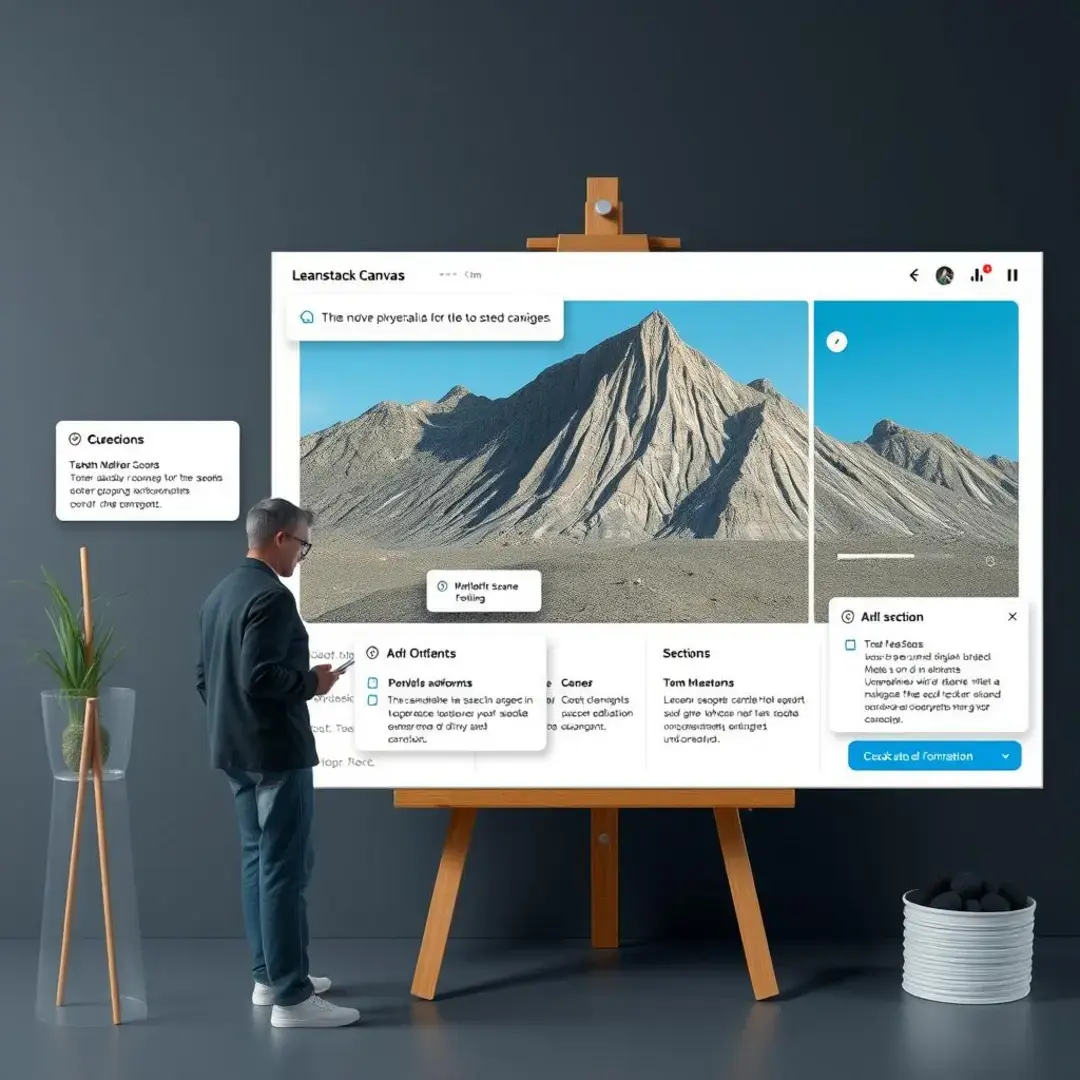Leanstack Canvas: Key to Iterative Development
Understanding the Leanstack Canvas for Advanced Users

Beyond the Basics: A Deep Dive into Each Building Block
The Leanstack Canvas begins with a critical assessment of the problem your startup aims to solve. Understanding the problem is crucial because it lays the groundwork for effective solutions. It involves extensive research to identify the pain points faced by your target audience. A well-defined problem statement can often help uncover insights that lead to innovative solutions.
After identifying the problem, the next step is to develop potential solutions. These solutions should not only address the problem but also be measurable, allowing for evaluation over time. It’s imperative to test and iterate on your solutions to ensure they remain effective and relevant. Remember, a solution is not static; it is a living entity that evolves as you gather more insights from your customers.
Key metrics are essential for gauging the progress of your startup. They provide insight into market acceptance and operational efficiency. These indicators should align closely with your business objectives. Identifying the right metrics and tracking them consistently will illuminate whether your efforts are producing the desired results.
Your unique value proposition sets you apart from competitors. It encapsulates what makes your product or service distinct, addressing why customers should choose you over others. Crafting a strong UVP involves understanding your target audience and tailoring your message accordingly. Ensure that this proposition not only resonates emotionally but is also clearly articulated in all your communications.
An unfair advantage is a characteristic of your business that makes it challenging for competitors to replicate your success. This could range from proprietary technology to exclusive partnerships and expert knowledge. Recognizing and leveraging your unfair advantage plays a crucial role in your long-term strategy. Sustainability in competitive advantage often translates into greater customer loyalty and market share.
Determining the right channels for communication and distribution is key to your marketing strategy. Channels can include social media, email marketing, direct sales, and more. The focus should be on those that align best with your customer segments. Testing various channels and evaluating their effectiveness will help you optimize your outreach.
Identifying and understanding your ideal customer is fundamental to developing a successful business model. This involves creating detailed customer personas that incorporate demographics, behaviors, and preferences. Knowing your audience allows you to tailor your offerings effectively. Engage with customers regularly to gather data that refines your understanding over time.
Understanding your cost structure is vital for maintaining financial health. Analyzing both fixed and variable costs allows for strategic budgeting and resource allocation. Regular reviews of your expenses can unveil areas for cost savings, thus enhancing profitability. By being proactive in managing costs, your startup can weather challenges with greater resilience.
Diverse revenue streams can bolster your startup against market fluctuations. This might include subscriptions, advertising, product sales, and more. Assessing different monetization strategies ensures your business model is robust and sustainable. Continuous evaluation and adaptation of your revenue streams in line with market demands will drive growth.
Advanced Strategies for Leanstack Canvas Implementation
Integrating Leanstack with agile development fosters an environment of rapid iterations and continuous improvement. This alignment allows teams to adapt quickly to changes based on user feedback and market trends. Employing Leanstack alongside agile practices promotes a holistic approach to product development, ensuring that decision-making processes are efficiently streamlined.
The Leanstack framework encourages a culture of experimentation, promoting innovation at every level of your business. It allows startups to hypothesize, test, and refine ideas systematically. By continuously experimenting, businesses can uncover new opportunities and refine existing offerings to better meet customer needs. This mindset nurtures a dynamic environment where innovation can thrive.
Effective strategic decision-making relies heavily on data and insights. Using Leanstack, teams can make informed decisions based on structured feedback and validated learning. This approach minimizes risks associated with new initiatives by utilizing real-world data. Ultimately, informed decision-making enhances agility and responsiveness in your business operations.
Mastering the Art of Iteration with Leanstack

Validating Your Assumptions with Real-World Data
Creating a Minimum Viable Product (MVP) is a crucial step in validating business hypotheses. The MVP serves as a tangible representation of your idea, allowing you to test critical assumptions. This process helps identify which features provide value to users and which do not. Iterating on the MVP based on user interactions facilitates quicker modifications that drive improvements.
Customer feedback is invaluable to the iterative process. By actively seeking feedback from early adopters, entrepreneurs can gain insights directly from those interacting with the product. This feedback loop allows for quick pivots or enhancements, fostering a cycle of continuous improvement. An iterative approach not only refines your offerings but also builds trust with your audience.
Pivoting and Adapting Your Strategy Based on Learnings
Data analysis is a fundamental aspect of adaptation. By scrutinizing key metrics, businesses can detect trends, strengths, and weaknesses. These insights are instrumental when deciding whether to persevere, pivot, or halt certain strategies. Regular metric analysis ensures that you remain aligned with your overall business goals.
Once areas for improvement are identified, implementing strategic changes becomes crucial. After adjustments are made, measuring their impact will allow you to determine the effectiveness of those changes. This cyclical process guarantees that your startup is perpetually evolving and improving its offerings based on the best available data. The ability to adapt quickly fosters resilience in an ever-changing market landscape.
Beyond the Canvas: Scaling Your Business with Lean Principles

Building a Lean Culture within Your Organization
A lean culture emphasizes experimentation across all levels of the organization. By empowering teams to take initiative and learn from their experiments, businesses can foster creativity and innovation. This support encourages team members to bring forth ideas without the fear of failure. As a result, the organization evolves as a collective unit that thrives on shared knowledge.
Incorporating a data-driven approach ensures that decisions are substantiated rather than based on intuition. This fosters a culture that values evidence and insights, leading to more effective strategies. By utilizing tools that aggregate and analyze data, businesses can make strategic choices backed by solid evidence. Ultimately, this commitment to data enhances overall business performance.
Integrating Leanstack with Other Business Tools and Frameworks
Integrating Leanstack with Customer Relationship Management (CRM) and project management systems can streamline operations. This interconnectedness facilitates seamless communication across teams and departments. Real-time data sharing improves transparency, enabling informed decision-making. Again, the result is a more cohesive workflow that drives productivity.
Using Leanstack as a central framework can align your team’s efforts toward a shared vision. By tracking progress collectively, teams can celebrate milestones while remaining focused on long-term goals. Regular check-ins based on Leanstack principles ensure that everyone remains accountable. This creates a culture of collaboration, enhancing overall team dynamics, and productivity.












